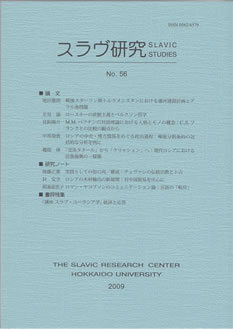ロシアの中央・地方関係をめぐる政治過程 ―― 権限分割条約の包括的な分析を例に ――
The Political Process of Centre-Regional Relationships in the Russian Federation: A Comprehensive Analysis of Treaties on the Division of Power
Author(s): Mizuki ChumanSubject(s): Politics / Political Sciences
Published by: Slavic Research Center
Summary/Abstract: This paper analyzes the transformation of centre-regional relationships in post-Soviet Russia, focusing on the division of power between federal and regional authorities and bilateral treaties. The Federal Treaty of 1992, the new Federal Constitution of 1993 and bilateral treaties signed between 1994 and 1998 provide for the division of power in Russia. In some cases, these treaties were annulled by mutual agreement between 2001 and 2003, but other regions resisted their elimination, and regions such as the Republic of Tatarstan started to negotiate new treaties. These treaties led centre-regional relationships in the Russian Federation to very individual problems. Thus, in order to understand centre-regional relationships, each treaty and each case of the opposition needs to be examined separately: the conflict between Russia and Chechnya, the competition over sovereignty between the federal government and both Tatarstan and Bashkortostan, as well as negotiations between Moscow and other regions. On the other hand, it is also useful to deal with this issue comprehensively. During the second half of the 1990s, Prime Minister Yevgeny Primakov warned about the vulnerability of federalism in Russia and stressed the need for reform, including amendment of the Constitution and the abolition of bilateral treaties. He was unable to achieve these goals, but did draw attention to the division of power as a federal issue. Some laws concerning centre-regional relationships were adopted, and one of the most important laws, the 1999 fundamental law on the division of power between the centre and regions provided a comprehensive rule for individual centre-regional relationships.The bilateral treaties were gradually eliminated under the first presidency of Vladimir Putin in the process of his aggressive implementation of federal reforms. These reforms are commonly criticized as a symbol of an undemocratic or authoritarian regime. However, there are two important facts that cannot be explained through such assessments. First, few of the regional subjects of the Russian Federation criticized or opposed the elimination of the treaties, and some regional leaders even co-operated in their abolition. Second, this process is a continual reform of the division of power, which had already started in the late 1990s.In this paper, first, I describe the content of the bilateral treaties in order to determine what role they played in the relationships between the centre and regions. I next analyze the process of enactment of the new federal law on the division of power between the federal centre and regions. Up to this point, centre-regional relationships in Russia had varied widely because of the bilateral treaties.
Journal: Slavic Studies
- Issue Year: 2009
- Issue No: 56
- Page Range: 91-125
- Page Count: 35
- Language: Japanese

